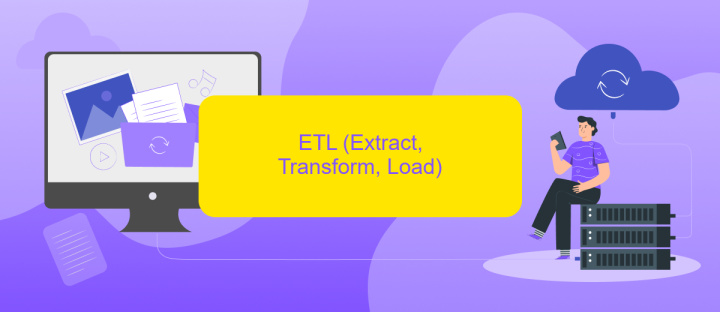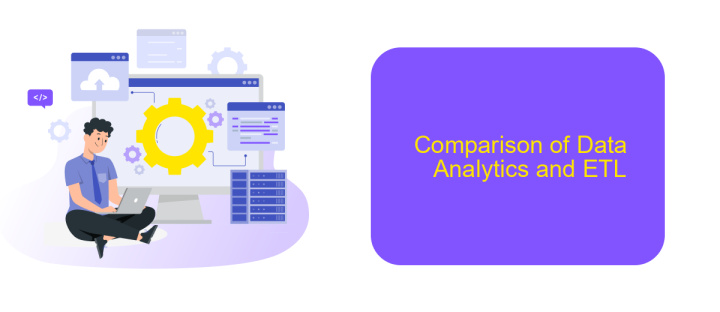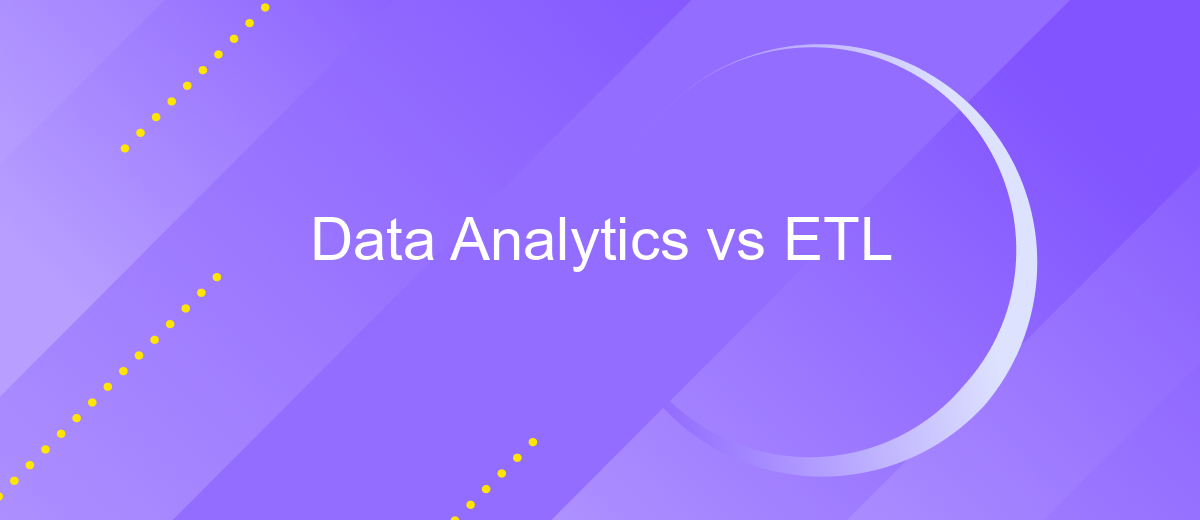Data Analytics vs ETL
In the evolving landscape of data management, understanding the distinction between Data Analytics and ETL (Extract, Transform, Load) is crucial for businesses aiming to leverage their data effectively. While Data Analytics focuses on interpreting complex datasets to drive strategic decisions, ETL processes are essential for preparing and structuring data for analysis. This article explores the key differences and synergies between these two critical functions.
Introduction
In today's data-driven world, both Data Analytics and ETL (Extract, Transform, Load) play crucial roles in managing and utilizing data effectively. While these concepts are often interrelated, they serve distinct purposes in the data lifecycle. Understanding the differences and interplay between Data Analytics and ETL is essential for businesses aiming to make informed decisions and optimize their operations.
- Data Analytics: Involves examining datasets to draw conclusions and support decision-making processes.
- ETL: Refers to the process of extracting data from various sources, transforming it into a suitable format, and loading it into a data warehouse or other storage systems.
- Integration Tools: Services like ApiX-Drive can automate data integration, making the ETL process more efficient and less error-prone.
By leveraging both Data Analytics and ETL, organizations can ensure that their data is not only well-organized but also actionable. Tools like ApiX-Drive further streamline these processes, allowing businesses to focus on deriving insights rather than getting bogged down by data management complexities.
Data Analytics

Data analytics involves the systematic computational analysis of data or statistics. It is used to discover, interpret, and communicate meaningful patterns in data. This process is essential for making informed business decisions, optimizing operations, and enhancing customer experiences. By leveraging data analytics, organizations can gain insights into market trends, customer behavior, and operational efficiency, which can drive strategic planning and competitive advantage.
Moreover, data analytics often requires the integration of various data sources to provide a comprehensive view. Services like ApiX-Drive can facilitate this by automating data transfer between different platforms and applications. ApiX-Drive allows users to set up integrations without needing extensive coding knowledge, making it easier to aggregate and analyze data from multiple sources. This streamlined process ensures that businesses can focus on deriving actionable insights rather than getting bogged down by data management complexities.
ETL (Extract, Transform, Load)

ETL (Extract, Transform, Load) is a fundamental process in data warehousing and analytics. It involves extracting data from various sources, transforming it into a suitable format, and loading it into a target database or data warehouse. This process ensures that data is accurately and efficiently integrated for analysis and reporting.
- Extract: Data is collected from multiple sources, such as databases, APIs, and flat files. This step often involves dealing with different data formats and structures.
- Transform: The extracted data is cleaned, normalized, and transformed into a consistent format. This step may include data validation, deduplication, and enrichment.
- Load: The transformed data is loaded into a target system, such as a data warehouse or a data lake, where it can be accessed for analysis and reporting.
Tools like ApiX-Drive can simplify the ETL process by automating data extraction and integration from various sources. ApiX-Drive provides a user-friendly interface to set up and manage data flows, reducing the need for manual coding and ensuring data consistency and accuracy. This automation allows organizations to focus more on data analysis and less on data preparation.
Comparison of Data Analytics and ETL

Data Analytics and ETL (Extract, Transform, Load) are two critical components in the realm of data management. Data Analytics focuses on interpreting and analyzing data to generate meaningful insights that drive business decisions. It encompasses techniques like statistical analysis, machine learning, and data visualization.
On the other hand, ETL is a process that involves extracting data from various sources, transforming it into a suitable format, and loading it into a data warehouse or other storage systems. ETL ensures that data is clean, consistent, and ready for analysis.
- Purpose: Data Analytics aims to derive insights, whereas ETL focuses on data preparation.
- Process: Data Analytics involves analysis techniques, while ETL involves data extraction, transformation, and loading.
- Tools: Data Analytics uses tools like Python, R, and Tableau; ETL uses tools like Apache Nifi, Talend, and ApiX-Drive.
- Outcome: Data Analytics provides actionable insights, whereas ETL ensures data quality and accessibility.
While Data Analytics and ETL serve different purposes, they are complementary. Effective data analytics relies on well-executed ETL processes to ensure the data being analyzed is accurate and reliable. Utilizing services like ApiX-Drive can streamline ETL processes, making it easier to integrate and prepare data for analysis.
- Automate the work of an online store or landing
- Empower through integration
- Don't spend money on programmers and integrators
- Save time by automating routine tasks
Conclusion
In conclusion, both Data Analytics and ETL (Extract, Transform, Load) play crucial roles in the data management lifecycle. Data Analytics focuses on interpreting and deriving insights from data to support decision-making, while ETL is essential for preparing and structuring data for analysis. Each function has its unique importance, and their integration can significantly enhance the efficiency of data-driven processes.
Leveraging tools like ApiX-Drive can streamline the integration of ETL processes with various data sources, making it easier to automate data workflows and ensure data consistency. By effectively combining ETL and Data Analytics, organizations can unlock the full potential of their data, driving better business outcomes and fostering a more data-informed culture. Understanding the distinct yet complementary roles of these processes is key to optimizing data strategies and achieving sustainable growth.
FAQ
What is the difference between Data Analytics and ETL?
Can ETL processes be automated?
Why is ETL important for Data Analytics?
Can Data Analytics be performed without ETL?
What tools can be used to integrate and automate ETL processes?
Apix-Drive will help optimize business processes, save you from a lot of routine tasks and unnecessary costs for automation, attracting additional specialists. Try setting up a free test connection with ApiX-Drive and see for yourself. Now you have to think about where to invest the freed time and money!


